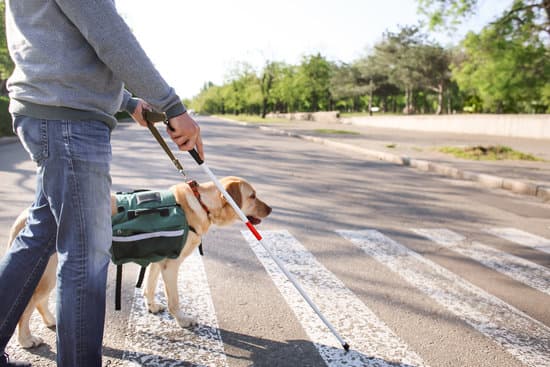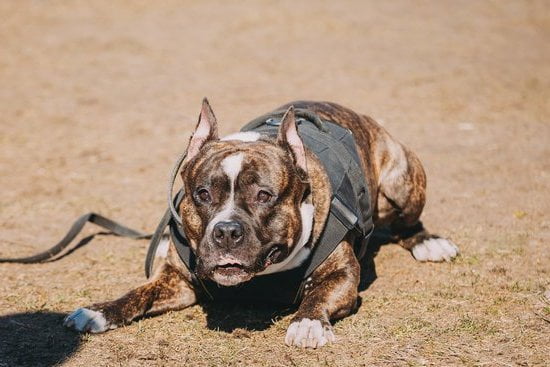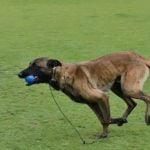Training an older dog to come when called is an essential skill that every pet owner should prioritize. Whether you have a rescue or have recently adopted an older dog, teaching them proper recall can significantly enhance their safety, well-being, and overall quality of life.
In this article, we will explore the importance of training older dogs, specifically focusing on the command “come.” We will also discuss the various benefits that come with teaching this command to our furry companions.
One of the key reasons why training an older dog to come when called is crucial is for their safety. As dogs age, they may become more susceptible to health issues or experience limitations in mobility.
Having a reliable recall command ensures that you can quickly bring your dog back to you in potentially dangerous situations, such as around busy streets or unfamiliar environments. Additionally, being able to call your dog back allows for greater freedom and off-leash enjoyment during walks or playtime.
Teaching an older dog the “come” command also strengthens the bond between you and your canine companion. The training process involves establishing trust through positive reinforcement techniques. By developing a strong relationship based on trust and mutual understanding, your older dog will be more inclined to respond quickly and eagerly when called. This not only fosters a deeper connection but also enhances their responsiveness to other commands and increases their overall obedience.
In the following sections, we will delve deeper into understanding your older dog’s behavior and needs, as well as providing valuable tips on establishing trust and using effective training techniques. By consistently practicing these methods and creating a suitable training environment, you will be well on your way to successfully training your older dog to come when called. So let’s get started.
Understanding Your Older Dog’s Behavior
As dog owners, it can be frustrating when our older dogs don’t respond to our calls. Understanding your older dog’s behavior is crucial in order to effectively train them to come when called. There could be several reasons why an older dog might not come when called, and it is important to explore these possibilities before beginning training.
One possible reason why an older dog may not come when called is a decline in their hearing or vision. Just like humans, dogs may experience age-related changes that affect their senses. If your dog has difficulty hearing or seeing you, they may not respond to your call. It’s important to have your dog’s hearing and vision checked by a veterinarian to rule out any underlying health issues.
Another factor that could affect an older dog’s response is mobility issues. Older dogs may develop arthritis or other joint problems that make it difficult for them to move quickly or comfortably. This can make it challenging for them to come when called, especially if they anticipate pain or discomfort. If you suspect that your older dog may be experiencing mobility issues, consult with your veterinarian for appropriate management strategies.
Understanding your older dog’s behavior is the first step in successful training. By identifying the possible reasons why they are not responding to your call, you can tailor your training approach and address any underlying health or mobility issues if necessary.
| Reasons Why an Older Dog Might Not Come When Called | Possible Solutions |
|---|---|
| Decline in hearing or vision | Have their senses checked by a veterinarian |
| Mobility issues | Consult with a veterinarian for appropriate management strategies |
Establishing Trust and Building a Strong Bond
When training an older dog to come when called, establishing trust and building a strong bond between you and your furry companion is crucial. Older dogs may have developed certain habits or fears over time, making it important to create an environment where they feel safe and supported. By focusing on trust and positive reinforcement, you can enhance your dog’s willingness to come when called.
To build trust with your older dog, it’s essential to be patient, understanding, and consistent in your training approach. Start by gaining their trust through daily interactions that involve petting, grooming, and spending quality time together. Use calm and reassuring tones of voice to communicate with them during training sessions.
Positive reinforcement is key in building a strong bond with an older dog. Reward their good behavior with verbal praise, treats, or favorite toys. This will not only motivate them but also strengthen the association between the “come” command and positive experiences.
Here are some additional tips for building a strong bond with your older dog:
- Engage in interactive play: Playtime can strengthen the bond between you and your senior dog. Choose activities that are suitable for their age and physical abilities.
- Provide mental stimulation: Keeping your older dog mentally stimulated is essential for their overall well-being. Consider using puzzle toys or games that challenge their brain.
- Be mindful of physical limitations: As dogs age, they may experience limitations in terms of mobility or energy levels. Adjust your activities accordingly to ensure they’re comfortable and not overexerted.
Remember that building trust takes time and patience. Keep training sessions short but frequent to maintain their interest, focus, and willingness to participate.
| Tips for Establishing Trust: |
|---|
| Be patient |
| Use a calm and reassuring tone of voice |
| Provide positive reinforcement (verbal praise, treats, toys) |
| Engage in interactive play |
| Offer mental stimulation |
| Be mindful of physical limitations |
The Right Training Techniques
When it comes to training an older dog to come when called, using the right techniques is crucial for success. Positive reinforcement training methods are highly effective in teaching dogs of all ages, including older ones. By using treats, praise, and rewards, you can motivate your older dog to respond to the “come” command consistently. Here is a step-by-step guide on how to use these techniques:
- Start with treats: Find a treat that your older dog loves and use it as a reward for coming when called. Begin by saying your dog’s name followed by the word “come” in a happy and inviting tone. When your dog responds by approaching you, give them the treat along with plenty of praise and affection.
- Use consistent cues: It is essential to establish consistent cues to help your older dog understand what you want from them. Choose a simple and clear command word or phrase for “come,” such as “here” or “this way.” Make sure everyone in your household uses the same cue so that there is no confusion for your furry friend.
- Gradual repetition: Practice the “come” command in different environments and gradually increase distractions over time. Start with quiet spaces indoors before moving onto more challenging outdoor areas with more temptations. Always reward your older dog when they respond correctly, gradually reducing the frequency of treats as they become more reliable.
Using positive reinforcement not only teaches your older dog to come when called but also strengthens the bond between you and enhances their overall obedience skills. Remember to be patient and consistent during training sessions, celebrating even small progress made along the way.
Creating a Safe and Conducive Training Environment:
In order for training an older dog to come when called to be successful, it is important to create a safe and conducive training environment. A distraction-free space allows your older dog to focus solely on you and the commands being taught. Here are some tips on how to set up a training space that encourages focus and reduces potential obstacles:
- Find a quiet area: Choose a quiet area in your home or yard where you can have your training sessions without interruptions. This will help minimize distractions and allow your older dog to concentrate on learning the “come” command.
- Remove potential hazards: Scan the training area for any potential hazards that could distract or harm your dog during training. Clear away any items that they could chew on, trip over, or become entangled in. This creates a safe environment where your older dog can learn without any danger.
- Use visual cues: To reinforce the training environment as a safe space, use visual cues such as boundary markers or tape to indicate the designated training area. This helps establish clear boundaries and signals to your older dog that it is time to focus on training.
Remember, consistency is key when creating a safe and conducive training environment for an older dog. By removing distractions and ensuring their safety, you are setting both you and your furry friend up for success in teaching them to come when called.
Creating a Safe and Conducive Training Environment
When it comes to training an older dog to come when called, creating a safe and conducive training environment is crucial. A distraction-free and secure space will help your dog focus on the training session and reduce potential obstacles that may hinder their learning progress. Here are some tips on how to set up an effective training environment for your older dog:
- Remove Distractions: Choose a quiet area in your home or yard where there are minimal distractions. This will allow your older dog to concentrate better during the training sessions. Turn off the TV, remove any toys or other animals from the area, and make sure there are no noises that could divert their attention.
- Use a Leash or Long Line: Especially during the initial stages of training, using a leash or long line can help keep your older dog close by while practicing recall commands. This gives you control over their movement and prevents them from running off if they don’t respond right away. As your dog becomes more reliable with recall, gradually increase their freedom by allowing longer distances without a leash.
- Secure the Training Area: Before starting any training session, ensure that the environment is safe for your older dog. Check for any potential hazards such as loose electrical cords, sharp objects, poisonous plants, or open doors that could lead them out of the secured space. By creating a safe area, you can prevent accidents and provide peace of mind during training.
- Minimize Interruptions: While consistency is key in training an older dog, interruptions can disrupt the flow of the session and affect their ability to learn effectively. Inform family members or anyone else sharing the space to avoid disturbing or distracting the dog during this dedicated time for training.
By setting up a safe and conducive training environment for your older dog, you are maximizing their chances of success in learning to come when called. Remember to always prioritize safety while providing a comfortable and focused space for training sessions. With the right environment, your older dog will be able to concentrate, learn, and respond better to your commands.
Starting with Basic Commands and Recall
Breaking down the training process
When starting to train an older dog to come when called, it’s important to break down the training process into manageable steps. Begin by reinforcing basic commands that your dog may already know, such as sit or stay. By establishing a foundation of obedience, you’ll lay the groundwork for successful recall training.
Using consistent cues and repetition
Consistency is key when teaching your older dog to come when called. Choose a specific cue or word to use every time you want them to come to you. This could be something like “come” or “here.” Make sure everyone in your household uses the same cue to avoid confusion for your dog.
To start, practice in a quiet and familiar environment where there are minimal distractions. Have some treats or their favorite toy ready as a reward. Call your dog using the chosen cue in a positive and enthusiastic tone. When they come to you, immediately give praise and reward them with a treat or playtime with their toy.
Repeat this exercise multiple times in each training session throughout the day but keep them short to prevent overwhelming your older dog. Gradually increase the distance between you and your dog as they become more comfortable with the command.
Progressing towards teaching “come” command
Once your older dog has mastered basic commands, gradually introduce the specific “come” command into their training routine. Start by practicing recall in controlled environments with minimal distractions before gradually exposing them to more challenging situations.
It’s essential to reinforce the positive association with coming when called by always rewarding your older dog when they respond correctly. Practice patience and understanding if they take longer to respond compared to younger dogs – remember that age can affect mobility and hearing.
Remember, consistency is key throughout this entire training process. Keep practicing regularly, using positive reinforcement techniques, and celebrate each small progress made by your older dog. With time and patience, they will become more reliable in coming when called, ensuring their safety and your peace of mind.
Dealing with Challenges and Setbacks
Addressing Fear and Anxiety
One common challenge that older dogs may face when learning to come when called is fear or anxiety. This can be due to previous negative experiences or simply a lack of exposure to new environments or people. To address this, it’s important to create a positive and safe training environment. Start by introducing your dog to new stimuli gradually, such as unfamiliar people or different locations. Use treats, praise, and rewards to associate these experiences with positive emotions.
If your older dog shows signs of fear or anxiety during training, remember to remain calm and patient. Avoid any punishment or forceful actions as this can exacerbate their fear and hinder the training process. Instead, focus on building trust by rewarding small steps towards the desired behavior. You may also consider seeking the help of a professional trainer who specializes in working with fearful dogs.
Tackling Stubbornness
Stubbornness is another challenge that some older dogs may exhibit during training. It’s important to remember that dogs are individuals with their own personalities and learning capabilities. If your dog seems resistant to the “come” command, try breaking down the training into smaller steps and reinforcing each successful attempt.
Consistency is key when dealing with stubbornness. Use clear cues and signals consistently, so your dog understands what is expected of them. Reinforce the desired behavior with treats or rewards every time they come when called correctly. Consistency will help build a strong association between the command and the action, making it more likely for your older dog to respond positively.
Seeking Professional Help
If you’re facing significant challenges while training your older dog to come when called, don’t hesitate to seek professional help from a certified dog trainer or behaviorist. These professionals have experience working with various breeds and age groups, and can provide personalized guidance for you and your senior pup.
Professional trainers can assess your dog’s specific challenges, tailor training techniques to their needs, and offer valuable insights that can speed up the training process. They may also address any underlying behavior issues and provide additional strategies for managing them. Remember, seeking help is not a sign of failure but rather a proactive step to ensure the success of your older dog’s training journey.
Consistency and Practice
When it comes to training an older dog to come when called, consistency and practice are key. Dogs, especially older ones, thrive on routine and repetition. By being consistent in your training sessions, you will reinforce the desired behavior and make it easier for your dog to understand what is expected of them. Additionally, regular practice will help solidify the command in your dog’s memory, making their response more reliable.
To maintain consistency, it is important to use the same cues and commands each time you call your dog to come. This helps them establish a clear association between the command and the action they are supposed to perform.
Selecting a specific word or phrase suitable for this command and sticking with it throughout the training process is crucial. Consistency also applies to your tone of voice when giving the command – use a firm yet positive tone that signals to your dog that their attention is required.
Regular practice is equally essential for successful training. Set aside dedicated time every day for short training sessions with your older dog. Keep these sessions focused and engaging, aiming for frequent repetitions of the “come” command while gradually increasing distractions as your dog becomes more adept at responding. Regular practice will not only reinforce the learned behavior but also strengthen the bond between you and your furry friend.
It’s important to note that progress may be slow, especially with older dogs who may have established habits or be resistant to change. Be patient during this process and avoid becoming frustrated or discouraged. Celebrate even small steps forward as they indicate progress in training your older dog to come when called. Remember that every correct response deserves praise and rewards.
By consistently practicing with patience and celebrating even small improvements along the way, you can successfully train an older dog to come when called. This not only enhances their safety but also deepens the bond between you both as you navigate through this new chapter of learning together. Keep up with regular training sessions and soon you’ll be amazed at the positive changes in your dog’s behavior.
Patience and Celebrating Progress
Training an older dog to come when called can be a challenging process that requires patience and understanding. It is important to remember that older dogs may take longer to grasp new commands compared to younger dogs, but with consistent training and positive reinforcement, progress can be made.
One key aspect of training an older dog is to acknowledge and celebrate every small step of progress. This helps to maintain motivation for both the owner and the dog.
For example, if your dog responds positively to your command by taking even just a few steps toward you when called, it is crucial to praise and reward them immediately. This positive reinforcement reassures the dog that they are on the right track, making them more likely to continue responding positively in future training sessions.
Another way to celebrate progress is through consistency in training. Implementing regular, short training sessions throughout the week will help reinforce the “come” command with your older dog. By repeating cues and commands consistently, you are providing clarity for their learning process and establishing a routine that they can rely on.
It is also essential to be patient during this training process. Older dogs may have developed habits or behaviors over time that need extra work to overcome. Some may struggle due to fear or anxiety issues while others may exhibit stubbornness. Understanding these challenges and adapting your training approach accordingly will help create a more effective learning environment for your older dog.
By staying patient, consistent, and celebrating every small success along the way, you can effectively train your older dog to come when called. With time and effort, you can build a strong bond with your furry companion while ensuring their safety in various situations where recall is necessary. Remember that each dog learns at their own pace, so stay dedicated and enjoy the journey of training your loyal companion.
Conclusion
In conclusion, training an older dog to come when called is a crucial skill that can enhance both their safety and overall quality of life. By understanding your older dog’s behavior and addressing any underlying health or mobility issues, you can establish trust and build a strong bond that will make the training process more effective.
Utilizing positive reinforcement techniques, creating a conducive training environment, and starting with basic commands are all key steps in successfully teaching your older dog the “come” command.
It is important to remember that training an older dog may present challenges and setbacks along the way. However, with patience, consistency, and perseverance, these obstacles can be overcome. It is essential to set realistic expectations and celebrate every small progress made during the training process.
By implementing the tips and techniques discussed in this article, you can effectively train your older dog to come when called. Not only will this command improve their safety, but it will also strengthen the bond between you and your furry companion. So don’t hesitate to start incorporating these strategies today for successful training results. Your older dog will thank you for it.
Frequently Asked Questions
What do you do when your dog doesn’t come when called?
When your dog doesn’t come when called, it is important not to get frustrated or angry. Instead, try to understand the possible reasons behind their behavior. It could be that they have not been properly trained or socialized, or they may be distracted by something more interesting in the environment.
In such cases, it is crucial to reinforce the recall command through positive reinforcement training techniques. This involves rewarding your dog with treats, praise, and affection whenever they respond correctly to their name or recall command. Consistency and patience are key in helping your dog learn to come when called.
Why does my senior dog not come when called?
There can be several reasons why a senior dog may not come when called. Age-related factors such as hearing loss or physical ailments might play a role in their diminished response. Additionally, older dogs tend to develop routine habits and become less inclined to follow commands that disrupt their established patterns.
In these cases, it is important to consult with a veterinarian and rule out any underlying health issues that may be affecting your dog’s behavior. Adaptation is also necessary by using alternative cues or signals for recall that are more easily perceived by your senior dog.
How do you get a stubborn dog to come when called?
Dealing with a stubborn dog can be challenging but not impossible when it comes to getting them to come when called. First and foremost, it is crucial not to engage in a power struggle or use force as this will only worsen the situation and damage trust between you and your pet. Instead, focus on building a positive association with coming when called by offering irresistible rewards like high-value treats or favorite toys whenever they respond correctly.
Using consistent commands while keeping training sessions short but frequent can help break through stubbornness gradually over time. Patience, persistence, and positive reinforcement techniques based on rewards are key elements in successfully getting a stubborn dog to come when called.

Welcome to the blog! I am a professional dog trainer and have been working with dogs for many years. In this blog, I will be discussing various topics related to dog training, including tips, tricks, and advice. I hope you find this information helpful and informative. Thanks for reading!





